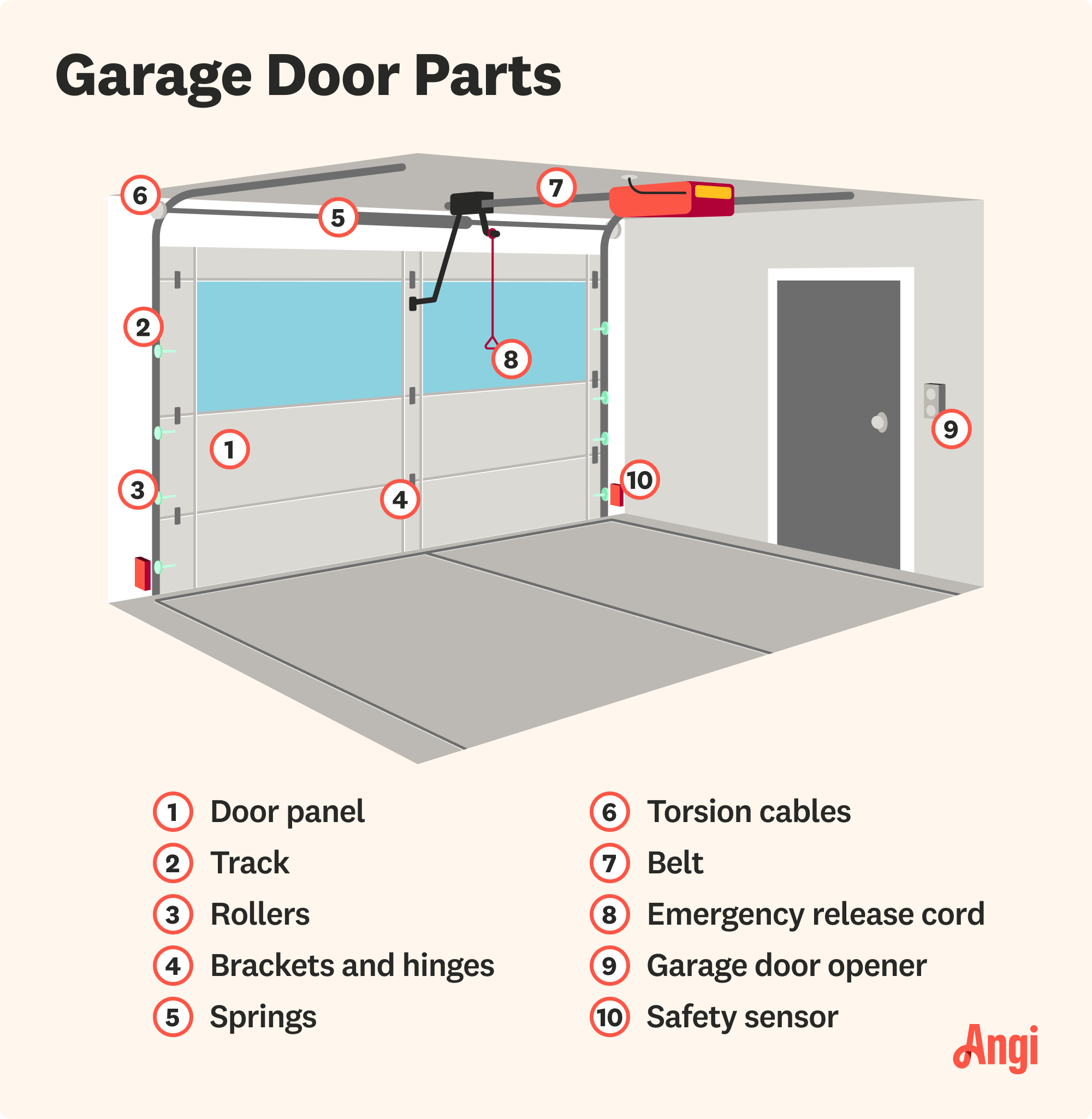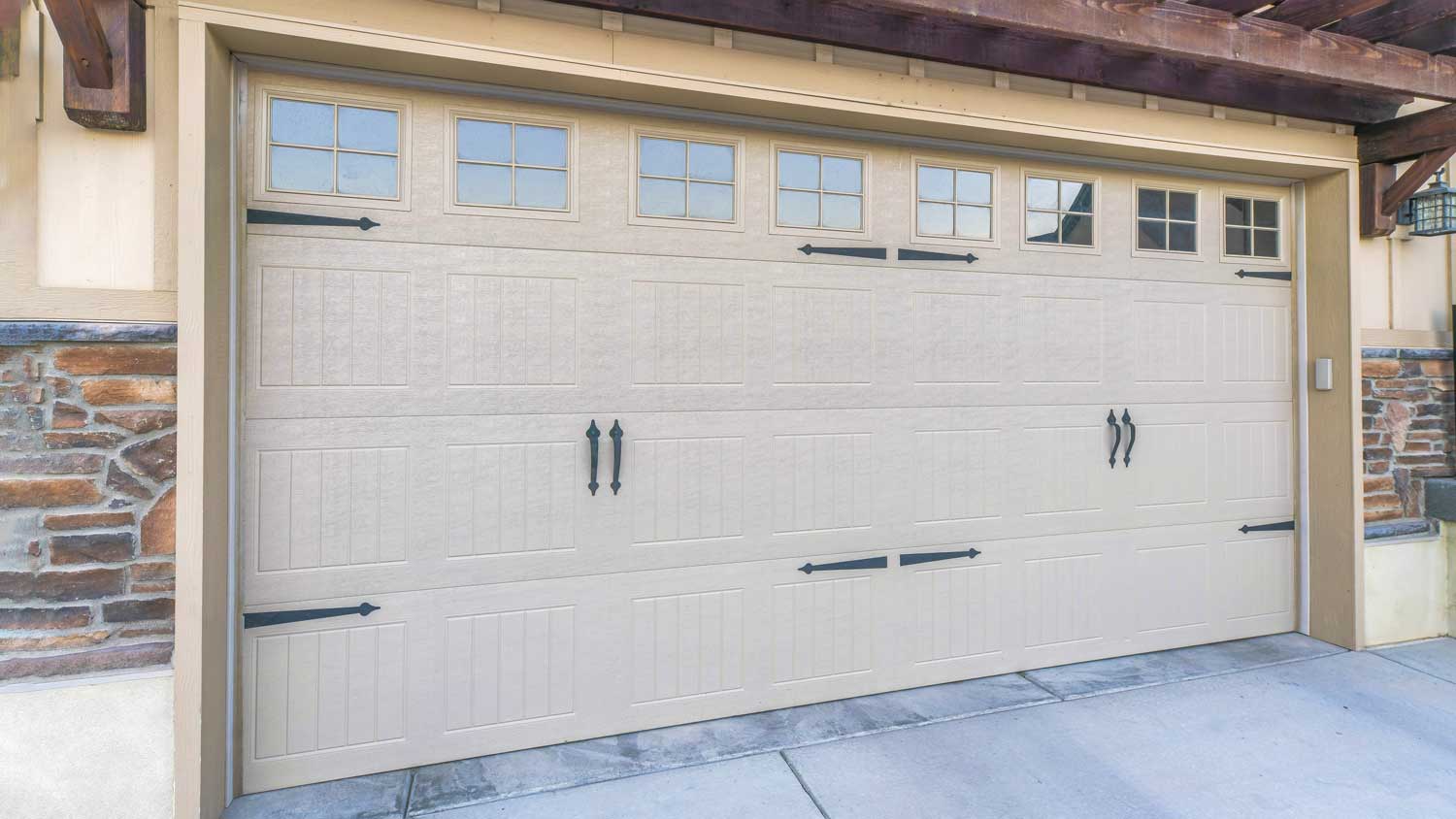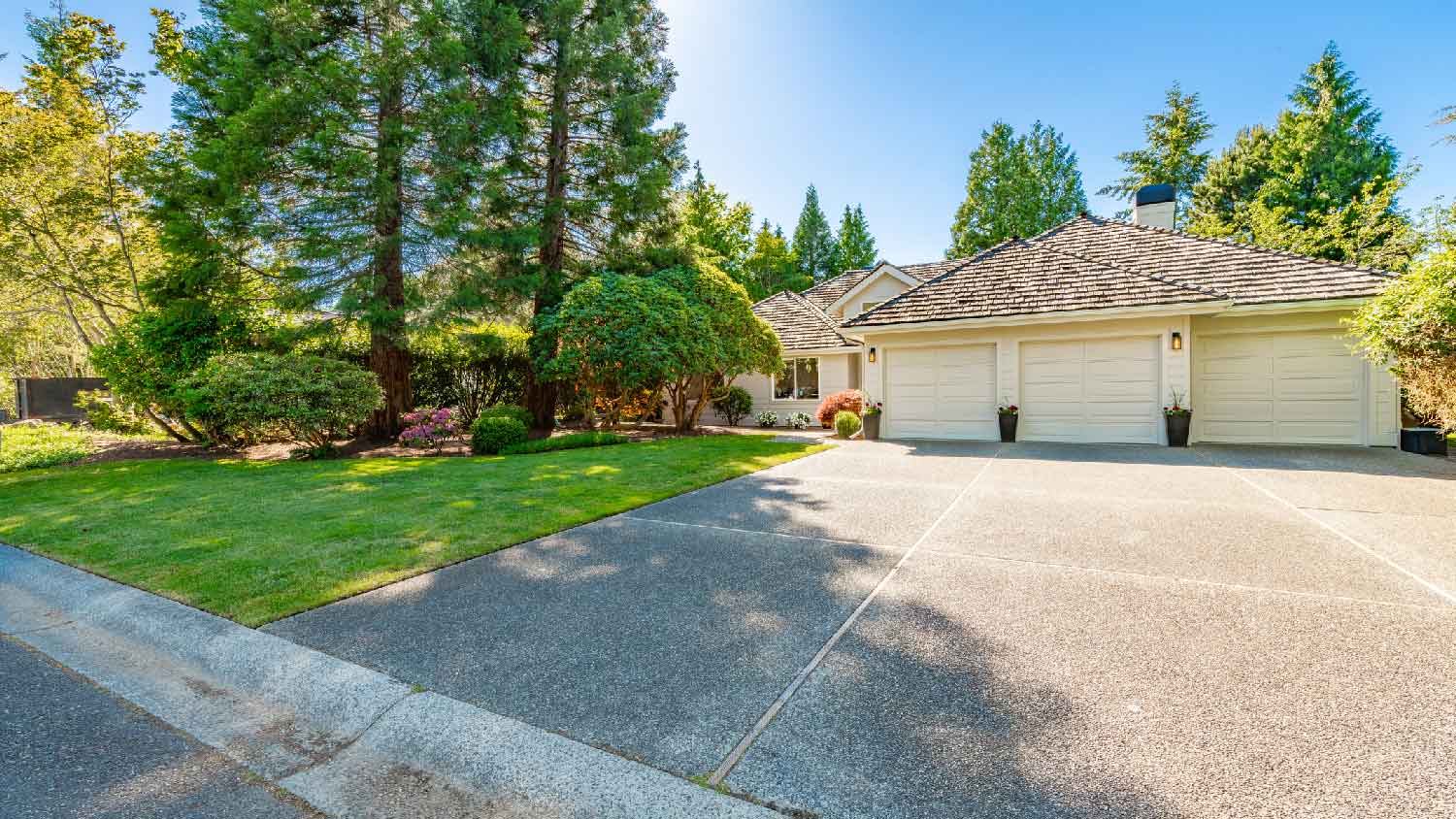What Are All the Parts of a Garage Door?
Garage doors are made up of several components that help them work properly


Garage doors are complicated and consist of many components for proper functionality.
Heavy-duty springs help control the door but can be dangerous if broken or damaged.
Garage door openers are especially prone to issues due to many moving parts and motors.
As you pull into your driveway after work and push the button on your garage door opener, you’re likely thinking about what’s for dinner, not how the door works. Garage doors are seemingly simple home features that you rely on each day. They allow you to enter and exit your home conveniently and, most importantly, they protect everything inside your home. Every homeowner should know how their garage door works so they can properly maintain it and keep it in tip-top shape.
How Garage Doors Work
Garage doors are typically made of steel, fiberglass, aluminum, or wood. When directed by a motor, your garage door opens by sliding on rollers along a track that runs up to the garage ceiling—or several feet below it depending on the size of your garage. The door slides back down along the track to close. Springs counterbalance the door’s weight and steadily control the door’s movement.
You can operate garage doors without openers as well, using a pull cord from the inside or a handle from the outside. The garage door spring is even more crucial here, as it helps you control the weight of the door without exerting a ton of effort.
Parts of a Garage Door
Several parts of a garage door work to make it function properly. These include hinges, tracks, rollers, springs, cables, and more.

Multiple rectangular wood, steel, aluminum, fiberglass, or vinyl panels make up garage doors. Colors vary, so you can easily find one that matches your home and boosts its curb appeal.
Hinges
Hinges secure the panels together, folding to allow the door to bend and retract as it moves along the track to open or close.
Tracks
You can find garage door tracks running vertically on either side of the garage door, curving into the ceiling above, and then running along the top of your garage. The tracks guide the door during its movement, and the curve—along with the garage door springs—help prevent the door from falling back down once you open it.
Rollers
To move along the tracks, your garage door glides along rollers consisting of a metal rod and a wheel made of nylon, steel, or plastic. The rollers sit inside the tracks.
Springs
Garage doors generally feature spring systems that control the door’s motion when it opens and closes, counterbalancing the door’s weight and allowing for steady movement. There are two common spring systems in garage doors: torsion and extension, with torsion spring systems being the most popular because of their durability. Springs are what help you open and close your door with ease if you have a manual door.
Cables
Many garage doors include torsion cables in addition to springs. The garage door cables attach to the bottom sides of the garage door to help ensure the movement is even and balanced, Without cables, it would be more likely for the springs to pull your garage door off balance or even off the tracks.
Emergency Cord
If you have a garage door opener, an emergency pull cord is a crucial safety feature to have. The cord hangs down on the inside of your garage and is usually a bright color. When you pull it, the system’s motor will disengage, and it will stop opening or closing. The cord is useful if the motor malfunctions and causes potential injury, or if you lose power and the motor won’t work. Pulling the emergency cord turns your garage door into a manual door.
Sensors
Like the emergency cord, sensors come in handy in an emergency when you need to stop the door from moving (like when it’s about to close on your foot). Garage door sensors are also called photo eyes. They shoot an invisible beam across the opening of the garage door, usually just above the ground. When an object breaks the beam, the sensors send a signal to the motor to stop the door from closing. The motor will usually reverse to open the door once again.
Garage Door Opener
Garage door openers are motorized devices that open and close garage doors automatically. They’re typically made up of sensors and motors that trigger the door to open or close when you direct it to do so by pressing the garage door opener. They typically only work from a short distance, so you won’t have to worry about accidentally opening the garage when you’re out and about.
Weather Seal
Your garage door’s weather seal stretches along the bottom of the door. It keeps out drafts, rain, and other outside elements. The seal protects everything inside the garage from the elements while also increasing the door’s energy efficiency. Some homeowners combine upgraded weatherstripping with garage door insulation to boost efficiency even further.
How to Maintain Garage Door Parts

Because garage doors are so important for the safety of your belongings and your home, it’s in your best interest to keep them in good working order. Proper maintenance will prevent the door system from malfunctioning when you need it.
Here are some quick garage door maintenance tips:
Lubricate hinges every few months so they don’t squeak.
Don’t lubricate tracks, but wipe them down with soap and water periodically to clean them of debris.
Rollers may wear over time and may warrant garage door replacements periodically. Make a point to check their condition every few months.
Torsion springs typically last up to 10 years, while extension springs last up to seven. Adjust your garage door springs or replace them accordingly to ensure that they work safely.
Inspect weather seals a few times a year and call a professional to repair or replace them when needed.
If your garage door doesn’t close properly or the safety features on your opener don’t seem to be working, calling in a pro for an immediate repair.
Repairing or Replacing Garage Door Parts Yourself vs. Hiring a Pro
It’s dangerous to repair or replace garage door parts on your own due to the doors' weight and the springs' tension. Outside of basic maintenance, all garage door projects should be handled by a pro. The cost of garage door repairs done by a pro is higher than if you DIY, but your safety is well worth the price.
If you experience a minor problem with your panels, hinges, or tracks, you can typically fix it yourself. But with rollers, springs, and openers, we recommend calling a garage door installer near you for help. These parts can be dangerous and complicated to work with, so it’s best to leave issues with these components to a professional.
Frequently Asked Questions
A garage door panel is a section of the garage door that spans the width of the door and connects to other panels above and/or below to create a folding door. The panels usually each have rollers on the sides that fit into the tracks and direct the sectioned door to open and close while remaining in balance.
The rubber piece at the bottom of a garage door is called the weatherstripping or garage door seal. It’s also referred to as the astragal, but that term is less common. This component creates a loose seal with the ground when the garage door is closed to help keep water, cold air, and insects out of your garage.
If you have a garage door opener and your door won’t close, you might have an issue with your sensors preventing the door from closing. If that’s the case, clear the area under your door, and then clean the sensors if that doesn’t work. If you still can’t get your door to close, try resetting the opener. In an emergency situation, you can always pull the emergency cord and close your door manually. You’ll have to reconnect the cord later and have a professional assess your opener for issues.





- Garage Door Installation Tips Every Homeowner Should Know
- Why Your Garage Door Won’t Stay Closed and What to Do About It
- 10 Garage Door Maintenance Tips for Maximum Longevity
- Why Your Garage Door Won’t Close and What to Do About It
- Can You Install a New Garage Door on Old Tracks?
- 11 Essential Tips for Buying a Garage Door
- What to Do if You Backed Into Your Garage Door
- Why the Garage Door Is Not Opening, But the Motor Is Running
- 8 Reasons Your Garage Door Is Stuck and What to Do
- 5 Warning Signs You Have a Broken Garage Door









